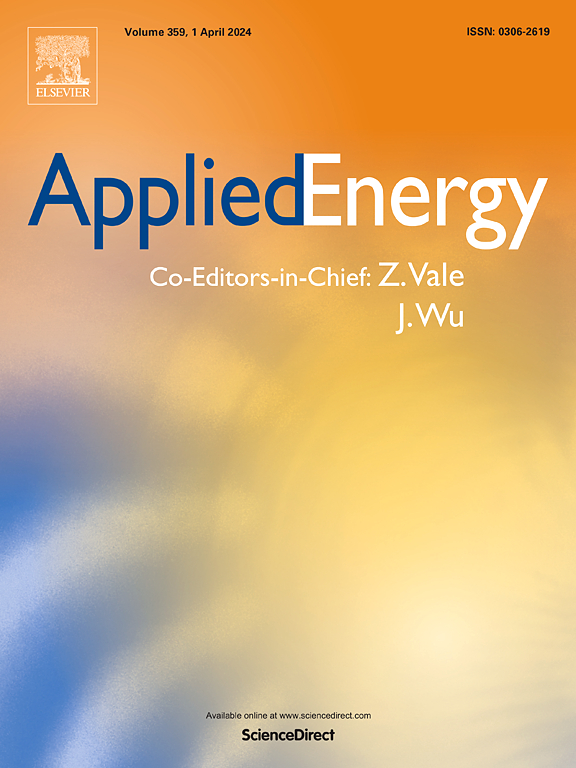Analysis of multilayer energy networks: A comprehensive literature review
IF 11
1区 工程技术
Q1 ENERGY & FUELS
引用次数: 0
Abstract
The increasing complexity of modern energy systems, driven by renewable integration, decentralized infrastructure, and cross-sector interdependencies, necessitates advanced analytical frameworks beyond single-layer models to address interdependencies, cascading failures, and resilience. Multilayer Network Theory (MLNT) offers a robust framework for modeling interactions across diverse energy carriers (e.g., electricity, gas, and heat), providing critical insights into scalability, sustainability, and fault resilience. However, despite its potential, no comprehensive review has systematically examined MLNT’s applications in multi-energy systems (MES). This paper fills this gap by synthesizing interdisciplinary research from 2014 to 2024 to assess MLNT’s role in advancing energy systems.
This review uses bibliometric techniques (VOSviewer) to identify dominant research themes, including integrated energy systems and resource optimization, sustainability analysis in multilayer energy networks, smart grid communication, network topology, and cascading failure mitigation. Machine learning (ML) emerges as a key enabler of MLNT, employing advanced techniques such as graph neural networks (GNNs), reinforcement learning, and hybrid models to enhance predictive accuracy, real-time adaptation, and dynamic fault detection. Practical implementations, including Integrated Energy Systems (IES) and Virtual Power Plants (VPPs), demonstrate the synergy between ML and MLNT in addressing challenges such as synchronization, fault isolation, and renewable energy variability. While MLNT has been widely applied in biology, finance, and transportation, its adoption in energy systems remains limited. Drawing insights from these domains, this review illustrates how multilayer models can improve fault detection, enhance cascading failure mitigation, and optimize cross-layer coordination in modern energy infrastructures, paving the way for more resilient and adaptive smart grids.
多层能源网络分析:综合文献综述
受可再生能源整合、分散式基础设施和跨部门相互依赖的驱动,现代能源系统日益复杂,需要超越单层模型的先进分析框架来解决相互依赖、级联故障和弹性问题。多层网络理论(MLNT)为不同能源载体(如电力、天然气和热能)之间的相互作用建模提供了一个强大的框架,提供了对可扩展性、可持续性和故障恢复能力的关键见解。然而,尽管具有潜力,但尚未有全面的综述系统地研究MLNT在多能系统(MES)中的应用。本文通过综合2014年至2024年的跨学科研究来评估MLNT在推进能源系统中的作用,填补了这一空白。本综述使用文献计量学技术(VOSviewer)来确定主要的研究主题,包括综合能源系统和资源优化、多层能源网络的可持续性分析、智能电网通信、网络拓扑和级联故障缓解。机器学习(ML)作为MLNT的关键推动者出现,它采用图神经网络(gnn)、强化学习和混合模型等先进技术来提高预测准确性、实时适应和动态故障检测。包括集成能源系统(IES)和虚拟电厂(vpp)在内的实际实施,展示了ML和MLNT在解决同步、故障隔离和可再生能源可变性等挑战方面的协同作用。虽然MLNT已广泛应用于生物、金融和交通运输领域,但其在能源系统中的应用仍然有限。通过对这些领域的深入研究,本文阐述了多层模型如何改进故障检测,增强级联故障缓解,并优化现代能源基础设施中的跨层协调,从而为更具弹性和适应性的智能电网铺平道路。
本文章由计算机程序翻译,如有差异,请以英文原文为准。
求助全文
约1分钟内获得全文
求助全文
来源期刊

Applied Energy
工程技术-工程:化工
CiteScore
21.20
自引率
10.70%
发文量
1830
审稿时长
41 days
期刊介绍:
Applied Energy serves as a platform for sharing innovations, research, development, and demonstrations in energy conversion, conservation, and sustainable energy systems. The journal covers topics such as optimal energy resource use, environmental pollutant mitigation, and energy process analysis. It welcomes original papers, review articles, technical notes, and letters to the editor. Authors are encouraged to submit manuscripts that bridge the gap between research, development, and implementation. The journal addresses a wide spectrum of topics, including fossil and renewable energy technologies, energy economics, and environmental impacts. Applied Energy also explores modeling and forecasting, conservation strategies, and the social and economic implications of energy policies, including climate change mitigation. It is complemented by the open-access journal Advances in Applied Energy.
 求助内容:
求助内容: 应助结果提醒方式:
应助结果提醒方式:


